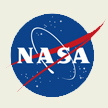The CRaTER Team
CRaTER's interdisciplinary science team includes space plasma physicists, nuclear physicists, cosmic ray physicists, solar and heliospheric scientists, lunar scientists, space radiation biology and radiation effects experts, space weather modelers and astronaut safety experts.
Principal Investigators
University of New HampshireInstitute for the Study of Earth, Oceans, and Space
- Nathan Schwadron, Principal Investigator
- Harlan Spence, Deputy Principal Investigator
Project Management
University of New Hampshire
• Sonya Smith, Project Manager
Researchers
University of New Hampshire
• Jody Wilson, Research Scientist (Lunar science)
• Chia-Lin Huang, Research Associate (Modeling)
• Andrew Jordan, Researcher (GCR variability, Science Liason to EPO)
Harvard Smithsonian
- Justin Kasper, Co-Investigator (Project Scientist)
- Tony Case, Co-Investigator (Project Scientist)
Aerospace Corporation
- Bern Blake, Co-Investigator (Telescope design)
- Joe Mazur, Co-Investigator (Radiation effects)
- Mark Looper, Co-Investigator (GEANT4 Modeling)
University of Tennessee - Knoxville
- Larry Townsend, Co-Investigator (Modeling)
NOAA Space Weather Prediction Center
- Terry Onsager, Co-Investigator (GOES cosmic ray data)
Massachusetts Institute of Technology
- Robert Goeke, Lead Systems Engineer
Southwest Research Institute - Boulder
• Cary Zeitlin, (Modeling, Data analysis)
Univ. of Maryland, NASA-Goddard Space Flight Center
- Tim Stubbs (Lunar dust, Micrometeorites)
- Ed Semones, (Supporting Measurements), NASA-Johnson Space Center
- Yu Yi, (Data Analysis), Chungnam National University, Daejeon, Korea

